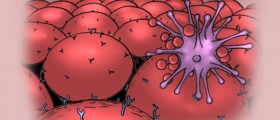
Introduction
The most commonly prescribed treatment for viral infections is to get a plenty of rest, drink a lot of fluids and eat nourishing diet. This kind of treatment will actually support the immune system to fight the virus by itself. Herbal supplements such as Echinacea or golden seal may also help boosting up the immune system. Doctors may prescribe antiviral medications to patients with compromised immune system or in cases of severe infections.
Signs and symptoms of viral infections
Signs and symptoms will differ depending on the type of virus that is causing the infection. The type of virus will also determine which tissues and organs will be infected. These infections may affect any tissue of the body and signs and symptoms may vary depending on the virus that causes the infection. For example, gastroenteritis is a type of viral infection caused by a rotovirus, a norwalk or norwalk type virus, an adenovirus, an astrovirus, a calicivirus, or others. It causes symptoms like abdominal cramps and pain, diarrhea, nausea and vomiting, a loss of appetite, a fever, muscle spasms and a loss of appetite. These infections are extremely contagious and may be easily transmitted to others. Normally they do not need any treatment but hospitalization and medical treatment may be needed in patients with weak immune systems such as the elderly and infants.
Other widespread viral infections are the common cold, the flu and viral pneumonia. Their symptoms most commonly begin in the upper or lower respiratory tract and cause runny or stuffy nose, headaches, body aches, chills, nausea, breathing problems, a wheezing in the chest, coughing and muscle cramps. These viral infections are benign but their symptoms are highly unpleasant.
Causes of viral infections
Viral infections are caused by the exposure to viruses and improper personal hygiene. Viruses exist on just about anything. They occupy all of the surfaces and may be present in the air. Breathing in after someone has sneezed or coughed may cause viral infections. Touching the eyes or mouth before washing the hands may also lead to infection. Adequate personal hygiene is a key factor in prevention of the viral infections. It may help to preserve one’s health and avoid all those unpleasant symptoms.
















Your thoughts on this
Loading...